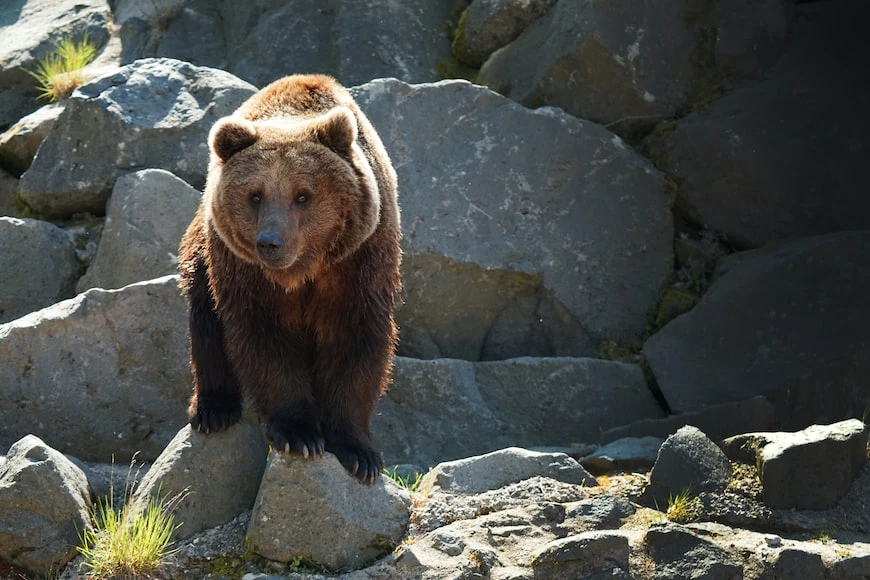The majestic Pyrenean Brown Bear, a creature full of mysteries and fascinating characteristics. But a troubling question arises: is it endangered? Let’s find out, but first, let me tell you more about this extraordinary species.
What is it?
It is a subspecies of brown bear that inhabits the Pyrenees mountains, a range that stretches between Spain and France. Its name is no accident, reflecting its home in these stunning mountainous landscapes. But, what is this bear like, and what sets it apart from others?
Characteristics
The Pyrenean Brown Bear has the robustness and a characteristic fur that allows it to survive the harsh winters of the Pyrenees. Its body is large and muscular, covered in dark brown hair that gives it its common name. But, how big and heavy are these bears? Males can measure up to 2.5 meters in height when standing up and can weigh up to 250 kilograms, while females tend to be a bit smaller.

What do they eat?
These bears are omnivorous, meaning they eat a variety of foods, both plant and animal. Their diet includes berries, insects, fish, small mammals, and even large ungulates if the opportunity arises.
Did you know? The Pyrenean Brown Bear is one of the largest carnivores in Europe. However, much of its diet consists of vegetation. Click To TweetHow do they live?
They are solitary animals, except during the mating season. During winter, they seek shelter in caves or in the thickness of the forest to hibernate.
Did you know? Although bears are generally solitary, Pyrenean brown bears can be seen in small groups during salmon season. Click To TweetWhere do they live and where can they be found?
As its name indicates, this bear primarily inhabits the Pyrenees mountains, especially in wooded and rocky areas. This is their home and where they feel most comfortable.
Reproduction
The mating season occurs during spring and early summer. After a gestation period of approximately 7 months, females usually give birth to two cubs.
Did you know? Pyrenean brown bear cubs are born during the mother's hibernation, being as small as a mouse at birth, but grow quickly thanks to rich maternal milk. Click To TweetHow many bears are there in the Pyrenees?
The populations of bears in the Pyrenees have fluctuated over time, but thanks to conservation efforts, their number has been increasing. However, it is estimated that there are about 40 to 50 brown bears in the Pyrenees.

Conservation status and reintroduction of the Bear in the Pyrenees
Despite the improvement in the number of bears, this subspecies remains vulnerable and is protected by law. Over the past decades, there have been Pyrenean brown bear reintroduction programs to help bolster their population and ensure their survival. These efforts have included the release of brown bears captured in Slovenia, a region with a healthy brown bear population.
On average, these bears can live up to 25-30 years in their natural habitat.
Yes, like many bears, Pyrenean Brown Bears hibernate during the colder months of winter.
The population of brown bears in the Pyrenees was first considered endangered in the 1980s.
Reintroduction programs and habitat protection are being carried out, along with public awareness campaigns for their protection.
Is the Pyrenean Brown Bear Endangered?
While the situation has improved thanks to conservation efforts, the population is still precarious and faces several challenges. Climate change, habitat loss, and human conflicts are constant threats to these magnificent animals.
Therefore, despite progress, the answer is that the Pyrenean Brown Bear is endangered. This reminds us of the importance of continuing our efforts to protect and conserve these animals and their unique habitat.
So, the next time you walk through the majestic landscapes of the Pyrenees, remember you are stepping into the home of one of the most impressive animals on our planet. A home we must protect and preserve, not just for the bears, but also for future generations who deserve to marvel at the same rich biodiversity we enjoy today.
The life journey of these bears is incredible, but it is also a reminder of the fragility of our environment and the responsibility we all share in its protection. We hope this article has given you a deeper insight into the Pyrenean Brown Bear and encourages you to learn more about how you can help protect its precious existence.
There is still much to discover and explore in our planet’s vast ecosystems. In our next article, we will dive into another corner of our amazing biodiversity. Are you ready for the next journey? We’ll see you there!

